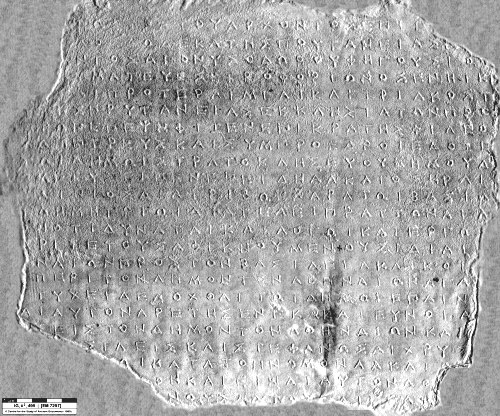Ancient Greeks did not use to indicate punctuation in their texts, apart from very exceptional cases; nor did they use to separate words with spaces, as we do. We can see how ancient texts were written originally if we observe some papyri or epigraphs, which have preserved various types of texts.

Of course, such a writing method made reading and comprehension rather difficult. That is the reason why, in Greek, the verb to read translates to ἀναγιγνώσκειν, which means recognise, decipher.
Over the following centuries, single words started to be separated with increasing frequency, while punctuation marks were used to outline period structure. The main purpose was to reduce as much as possible both doubts and difficulties in interpreting texts.
Nowadays, punctuation marks used in Greek texts are altogether quite similar to those used in texts written in Latin, with few differences which must be highlighted.
Greek |
Latin |
Mark description |
|---|---|---|
. |
. |
Full stop |
, |
, |
Comma |
· |
: or ; |
High dot |
; |
? |
Question mark |
' |
' |
Apostrophe |
As we can see, the high dot usage coincides with both our colon and semicolon, whereas the mark identical to our semicolon represents a question mark. Greek has no mark corresponding to our exclamation mark